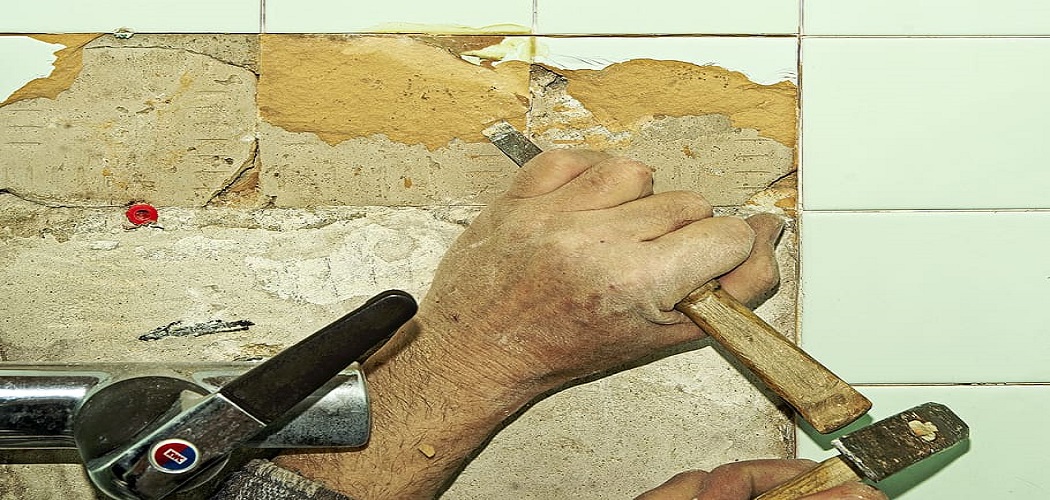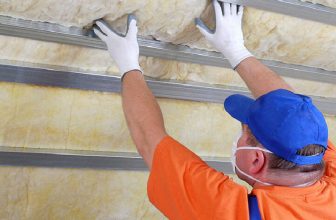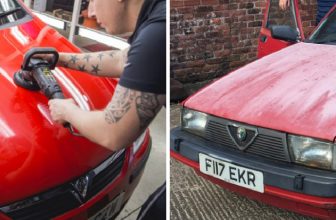How to Make Plexiglass Clear Again
Plexiglass is a good alternative to glass which has both plastic and glass properties. Having many benefits, we have to also take care of it. Usually, dust from the environment makes plexiglass cloudy and sometimes scratched. However, here, we will give our best opinions on how to make plexiglass clear again.
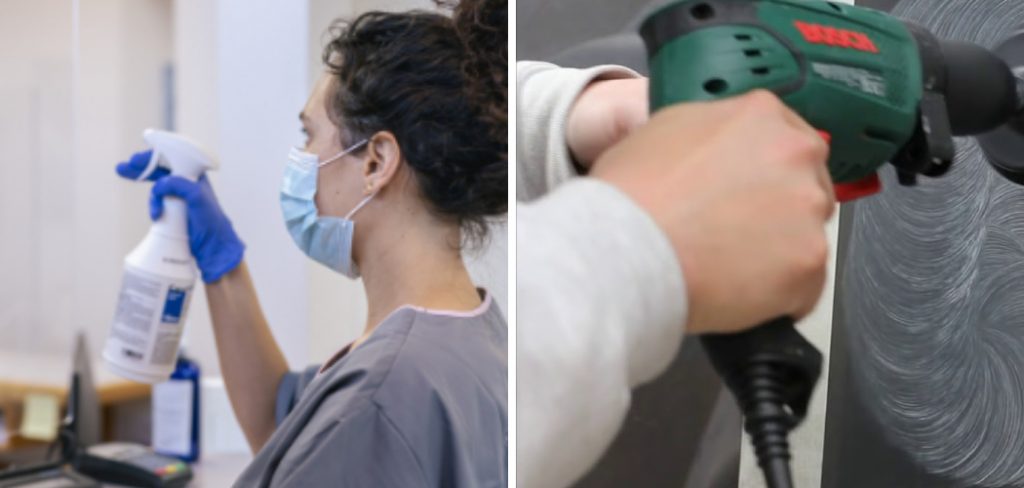
It is important to clean and maintain your plexiglass regularly in order to keep it looking clear and new. Here are some tips for making plexiglass clear again:
What is Plexiglass?
Plexiglass is a strong, transparent plastic that is often used as a substitute for glass in various applications. It is lightweight and shatter-resistant, making it a popular choice for windows, display cases, signage, and more.
You may also know plexiglass by its other names, such as acrylic or polycarbonate. Whatever the name, it is a durable and versatile material that can be easily scratched if not properly maintained. It is important to regularly clean and protect your plexiglass in order to maintain its clarity.
You may have noticed that after some time, plexiglass can become cloudy or scratched. This is often caused by dirt, dust, and debris accumulating on the surface over time. Luckily, there are ways to restore its clarity.
Why is it Important to Keep Plexiglass Clear?
Keeping plexiglass clear not only makes it look better but also ensures its functionality. For example, if you have plexiglass windows or doors, keeping them clear will allow natural light to enter your space and provide visibility for safety purposes.
In addition, cloudy or scratched plexiglass can make a poor impression on customers, especially if it is used for display cases or signage. Keeping it clean and well-maintained can help improve the overall appearance of your space.
You may also want to keep your plexiglass clear for practical reasons, such as maintaining the value of your investment. Since plexiglass can be expensive, it is important to protect and maintain it in order to prolong its lifespan.
Advantages and Disadvantages of Plexiglass
Advantages:
- Lightweight and shatter-resistant
- Easy to shape and mold into various forms
- Transparent, allowing for natural light transmission
- Durable and long-lasting
- Resistant to weather and UV rays
- More affordable than glass
- It can be easily cleaned and maintained

Disadvantages:
- Can easily scratch if not properly maintained
- Prone to static electricity, attracting dust and debris
- Can yellow or become brittle over time if exposed to certain chemicals
- It may be more expensive than traditional glass in some cases
- It can be easily damaged by solvents and harsh chemicals
- It can be difficult to repair once damaged
Despite some of its disadvantages, plexiglass offers many advantages that make it a popular choice for various applications. With proper care, its drawbacks can be minimized.
Required Materials:
Soft, Non-abrasive Cloth or Microfiber Cloth:
It is important to use a soft cloth when cleaning plexiglass in order to avoid scratching the surface. Microfiber cloths are great for this purpose as they are gentle and do not leave lint behind.
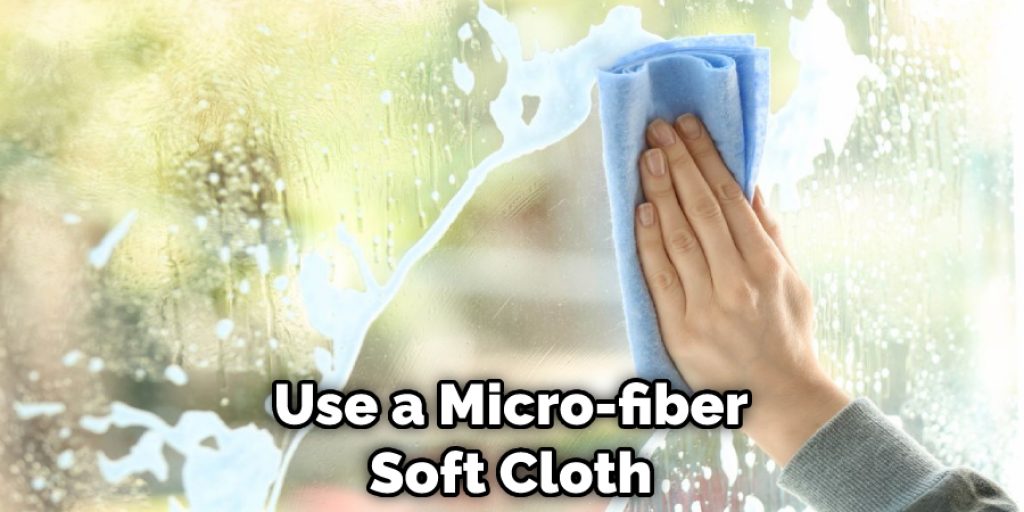
Mild Soap or Detergent:
Using a mild soap or detergent is recommended for cleaning plexiglass as it will not damage the surface. Avoid using harsh chemicals or abrasive cleaners as they can cause scratches and damage to the plexiglass.
Clean Water:
Having access to clean water is important for rinsing off any soap or dirt from the plexiglass.
Optional Materials:
Plastic Polish:
If your plexiglass is already scratched, you may want to consider using a plastic polish to restore its clarity. These products work by filling in the scratches and creating a smooth surface.
Anti-Static Cleaner:
Using an anti-static cleaner can help reduce the amount of dust that accumulates on your plexiglass, keeping it clearer for longer periods of time.
Things to Consider Before Cleaning Your Plexiglass:
- Always test a small, inconspicuous area before cleaning the entire surface.
- Do not use paper towels or abrasive materials as they can scratch the surface.
- Avoid using harsh chemicals or cleaners, such as ammonia, bleach, or acetone.
- If your plexiglass has a protective film, do not remove it until after cleaning.
How to Make Plexiglass Clear Again
There are many ways how to make plexiglass clear again. Among them, We will show three easy ways.
First Method:
- First of all, you need to remove the dust particles. For doing that, you can use your breath or hair dryer to blow dust or dirt. It would be best if you kept the hairdryer at the coolest level as the hot air may do some damage to your plexiglass. Keep it blowing until you feel there is no dirt.
- Now mix water and dish soap in a pot and pour it over your plexiglass. If you have a spray, you can pour water and dish soap mixture in there and spray over plexiglass.
- As we said earlier, avoid using ammonia, acetone, or alcohol. So, while making water and dish soap mixture, be careful about that.
Second Method:
- There are many pores in the plexiglass, and for this, you cannot use any cloth to clean. Some fabric will be damaged by sticking in the pores. The microfiber cloth is an excellent option to use after blowing off the dirt from the surface.
- Now wipe the plexiglass using a microfiber cloth. Try to focus on the dark spots. Remember not to give much pressure while wiping.
- After that, if you still see the plexiglass contain dirt, you may start again by using the water and dish detergent solution. You can repeat this process as many times as you want until you get your desired cleaning.
- For drying, please do not keep the plexiglass in the air too much when it is wet, as it will leave some water drops on your glass. It would be best if you wiped it until it is dry. Well, if you observe some water drops, try repeating the cleaning method once again.
Third Method:
- If you want to remove some marks or some hard dirt, you can use a sharp scraping tool like a razor blade. Slowly move the sharp edge of a razor blade to make the surface level. Be careful using a razor blade as it may damage your plexiglass significantly if you are under too much pressure.
- To remove deep scratching, you can use sandpaper. Gently move it over the plexiglass as we do on wood. Do not give much pressure.
- You may buff plexiglass using a stationary polishing wheel. While buffing, place plexiglass in such a way that it does not move. It can do more damage if it moves while buffing.
- Lastly, you can apply a coat of wax and polish to give the plexiglass an extra shine.
Fourth Method: (Using Plastic Polish)
- This method is best for restoring scratched plexiglass.
- First, clean the plexiglass using one of the methods mentioned above to remove any dirt or debris. Let it dry completely before moving on to the next step.
- Apply a small amount of plastic polish onto a soft cloth and rub it onto the scratched area in circular motions.
- Continue rubbing until the polish is evenly distributed and starts to dry.
- Use a clean cloth to buff away any excess polish, revealing a smooth surface.
- Repeat this process if there are still scratches visible.
- Once the plexiglass is restored to your desired level of clarity, clean it again with a mild soap and water solution to remove any remaining polish residue.
Tips for Making Plexiglass Clear Again
Here are some tips for making plexiglass clear again:
Use a Microfiber Cloth:
When cleaning your plexiglass, it is important to use a soft cloth such as microfiber. Avoid using paper towels or rough materials, as they can scratch the surface.

Use Mild Soap and Water:
In most cases, mild soap and water will be enough to clean your plexiglass. Avoid harsh chemicals and abrasive cleaners as they can damage the surface.
Rinse and Dry Thoroughly:
After cleaning with soap and water, be sure to rinse your plexiglass thoroughly to remove any residue. Then, dry it with a clean microfiber cloth or allow it to air dry.
Use a Plastic Cleaner:
If your plexiglass is still cloudy after cleaning, you may want to try a plastic cleaner specifically designed for acrylic or polycarbonate. These cleaners can help remove stubborn dirt and grime without damaging the surface.
Polish with a Plastic Polish:
For scratches on your plexiglass, you can use a plastic polish to buff them out. Be sure to follow the instructions carefully and test on a small area first.
Apply a Protective Coating:
To prevent future damage and maintain the clarity of your plexiglass, you can apply a protective coating. This will help repel dirt and keep your plexiglass looking clear for longer.
Do You Need to Get Help From Professionals?
If the above methods do not work for your plexiglass or if you are unsure about how to properly clean it, it is best to seek professional help. They have the necessary tools and experience to safely restore your plexiglass to its original clarity.

Additionally, it is important to follow the manufacturer’s instructions for cleaning and maintenance to avoid any damage. With proper care, your plexiglass will stay clear and beautiful for years to come.
You can also consider investing in a plexiglass cleaner or polish to have on hand for regular maintenance. With these tips and methods, you can easily make your plexiglass clear again without any hassle. So, be sure to keep them in mind the next time you need to clean your plexiglass!
How Much Time It Will Take?
The time it takes to make plexiglass clear again depends on the severity of the dirt or scratches and which method you choose. In most cases, cleaning with mild soap and water should only take a few minutes. If you need to use a plastic cleaner or polish, it may take longer depending on how many times you need to repeat the process.
For deeper scratches or more extensive restoration, it may take longer and require the use of a professional. However, with regular maintenance and proper care, you can keep your plexiglass clear and avoid any major cleaning or repair efforts in the future.

You can also save time by regularly cleaning your plexiglass and addressing any minor scratches or dirt buildup as soon as you notice them. This will prevent the need for more extensive cleaning and restoration in the long run.
How Much Could It Cost?
The cost of making plexiglass clear again also depends on the severity of the issue and which method you choose. Cleaning with mild soap and water is a low-cost option, while using a plastic cleaner or polish may be slightly more expensive.
Hiring a professional for extensive restoration can also be costly. However, investing in regular maintenance and using proper cleaning techniques can help prevent the need for professional help and save you money in the long run. Ultimately, the cost will vary depending on your specific situation and needs. So be sure to choose a method that suits your budget and provides the best results for your plexiglass!
You now have all the tips and methods to make your plexiglass clear again. With proper care and maintenance, you can keep it looking clear and beautiful for years to come. Whether it’s at home or in a commercial setting, plexiglass is a versatile material that adds a touch of sophistication to any space. So make sure to follow these steps and enjoy crystal clear plexiglass in no time! So, keep these tips in mind and give your plexiglass the proper care it deserves.
Frequently Asked Questions
What Product Cleans Plexiglass?
There are many products that can clean plexiglass. The best ones are distilled white vinegar and rubbing alcohol.
Distilled white vinegar is an effective cleaner for windows, mirrors, tile, stainless steel, appliances and more. It also cleans the surface of the plexiglass by removing stains like fingerprints and other marks. Distilled white vinegar should be diluted with water to make it less harsh on the surface of the plexiglass.
Can You Use Vinegar to Clean Plexiglass?
You can use vinegar to clean plexiglass, but you should avoid using it on a regular basis because it will strip the material of its natural oil.
To get the best results from vinegar when cleaning plexiglass, spray it onto a rag and wipe away any dirt or residue before washing with soap and water.
If you want to speed up the process, mix one part white distilled vinegar with two parts water in a spray bottle and use this mixture to clean your glass surfaces.
Can You Use Rubbing Alcohol to Clean Plexiglass?
No, rubbing alcohol is not a suitable cleaning agent for plexiglass. We hope that you found this article helpful in answering your questions related to content writing and how to become a content writer. If you have any thoughts or suggestions, feel free to write them down below in the comments section. You can also check out our other articles for more tips and tricks on content writing.
Can You Use Rubbing Alcohol to Clean Plexiglass?
No, rubbing alcohol is not recommended for cleaning plexiglass as it can damage the surface. It is better to use a mild soap and water solution or a plastic cleaner specifically designed for acrylic or polycarbonate. Additionally, always make sure to follow the manufacturer’s instructions to avoid any potential damage. So, it is best to avoid using rubbing alcohol to clean glass. However, when you do need to use it, make sure to dilute it with water and test it on a small area first before using it on the entire surface.
Is Acrylic and Plexiglass the Same?
Acrylic and plexiglass are not the same. Acrylic is a type of plastic that is made from ethylene, acrylic acid, methyl methacrylate, water, and other chemicals. Plexiglass is a transparent form of glass made from polymethyl methacrylate (PMMA).
Acrylics are manufactured by polymerizing molecules of ethylene gas into long chains which are then forced under high, pressure through openings in metal dies toby three-dimensional shapes. The PMMA used in plexiglass is created by heating the chemical mixture to about 800 degrees Fahrenheit for about 20 minutes.

Both acrylic and plexiglass have similar properties and are often used interchangeably, but there are subtle differences between them. Plexiglass is typically more expensive than acrylic due to its higher quality and clarity. It also has a higher resistance to scratches and UV rays.
Conclusion
Plexiglass is a versatile material that can be used in many different applications, but it requires proper care and maintenance to stay clear and free of scratches. By following the methods outlined in this article, you can easily restore and maintain the clarity of your plexiglass surfaces. Remember to always be gentle and use mild cleaners to avoid damaging the material. With these tips on how to make plexiglass clear again , you can keep your plexiglass looking brand new for years to come. Happy cleaning!
You may read also – How to Clean Calcite Crystals


